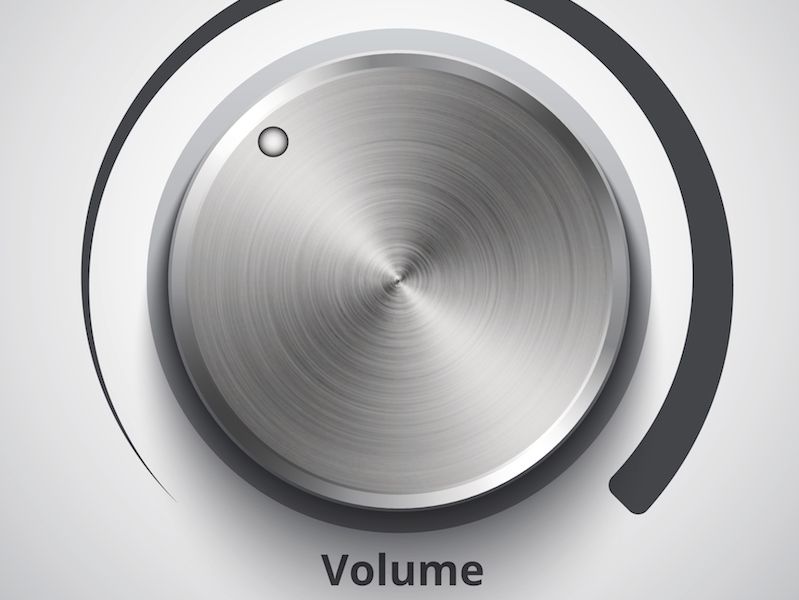
You ever go to the beach and see one of those “Beware of Shark” warnings? It’s easy to understand that you shouldn’t ignore a warning like that. A warning like that (particularly if written in huge, red letters) may even make you rethink your swim altogether. For some reason, though, it’s difficult for people to listen to warnings concerning their hearing in the same way.
Current studies have found that millions of individuals neglect warning signs regarding their hearing (this research exclusively considered populations in the UK, but there’s little doubt the problem is more global than that). Awareness is a big part of the issue. It’s pretty instinctive to be scared of sharks. But the majority of individuals don’t have an overt fear of loud sounds. And the real question is, what’s too loud?
Loud And Hazardous Sound is All Around us
It’s not just the machine shop floor or rock concert that are dangerous to your hearing (not to minimize the hearing hazards of these scenarios). There are potential hazards with many common sounds. That’s because exposure time is as hazardous as the volume. Your hearing can be injured with even low level sounds like dense city traffic if you experience it for more than two hours at a time.
Read on to find out when sound gets too loud:
- 30 dB: This is the volume level you would expect of normal conversation. At this volume, there won’t be a limit to how long you can confidently be exposed.
- 80 – 85 dB: An air conditioner, heavy traffic, and lawn equipment are at this volume. After around two hours this level of sound becomes dangerous.
- 90 – 95 dB: Think of the noisiness of a motorcycle. This level of exposure becomes dangerous in as little as 50 minutes of exposure.
- 100 dB: This is the amount of noise you might experience from a mid-size sporting event or an approaching subway train (of course, this depends on the city). 15 minutes of exposure will be enough to be dangerous at this sound level.
- 110 dB: Have you ever cranked your Spotify music up to max volume? That’s normally around this volume on most smartphones. 5 minutes will be enough to be unsafe at this volume.
- 120 dB and over: Anything over 120 dB (think loud rock concerts or very large sporting events) can bring about immediate damage and pain in your ears.
What Does 85 dB Sound Like?
Generally speaking, you’re hearing is at risk when you’re experiencing any sound 85 dB or above. The issue is that it isn’t always obvious just how loud 85 dB is. A shark is a tangible thing but sound isn’t so tangible.
And that’s one of the reasons why hearing warnings commonly go ignored, when the sound environment isn’t loud enough to cause pain, this is specifically true. Here are a couple of potential solutions:
- Sufficient training and signage: This especially pertains to the workplace. Training and signage can help reinforce the real dangers of hearing loss (and the advantages of protecting your hearing). Signage could also let you know just how noisy your workspace is. Training can help employees know when hearing protection is necessary or recommended.
- Get an app: Your hearing can’t be directly safeguarded with an app. But there are a few sound level metering apps. It’s hard to judge what 85 dB feels like so your hearing can be injured without you even knowing it. Using this app to keep track of sound levels, then, is the solution. Using this method will make it more instinctive to distinguish when you are going into the “danger zone”. (Or, the app will merely tell you when things get too loud).
When in Doubt: Protect
No signage or app will ever be perfect. So if you’re in doubt, take the time to safeguard your ears. Noise damage, over a long enough period of time, can result in hearing loss. And it’s easier than it ever has been to injure your ears (all you have to do is turn your earpods up a little too loud).
You shouldn’t increase the volume past mid way, especially if you’re listening all day. You need noise cancellation headphones if you are constantly turning up the volume to block out background sound.
That’s the reason why it’s more significant than ever to recognize when loud becomes too loud. And in order to do this, you need to increase your own awareness and knowledge level. It’s not difficult to limit your exposure or at least use hearing protection. That starts with a little recognition of when you should do it.
Today that should also be easier. That’s even more relevant now that you have some awareness.
Think you might have hearing loss? Schedule a test.